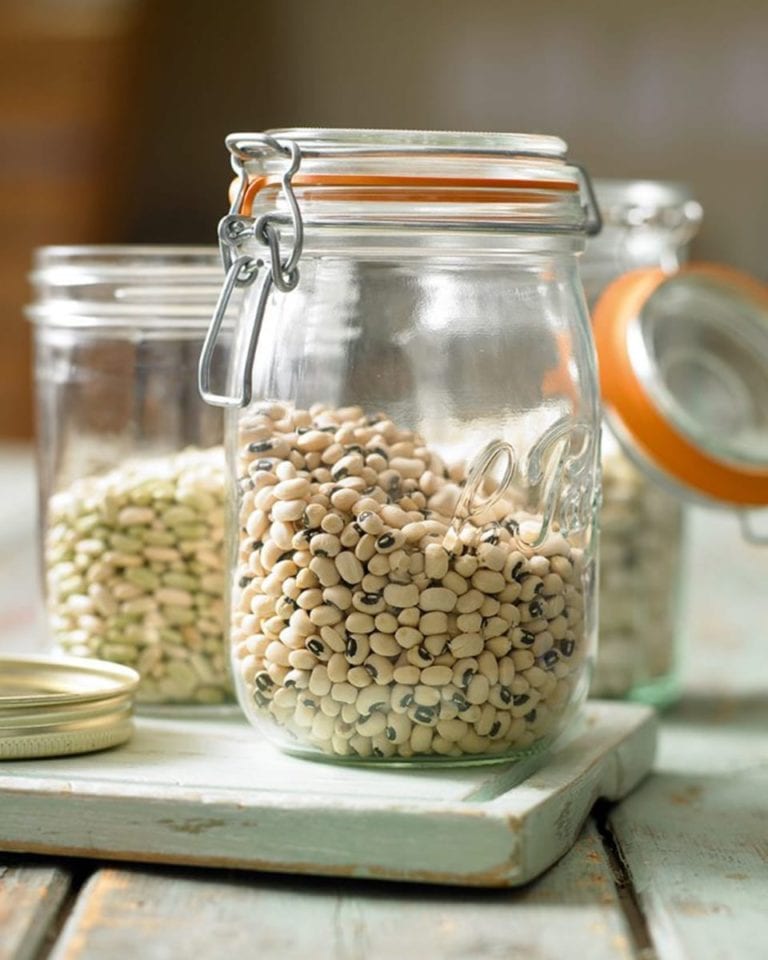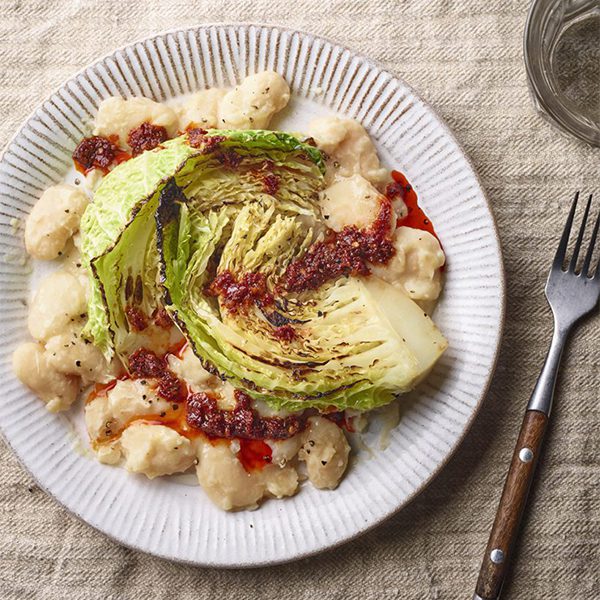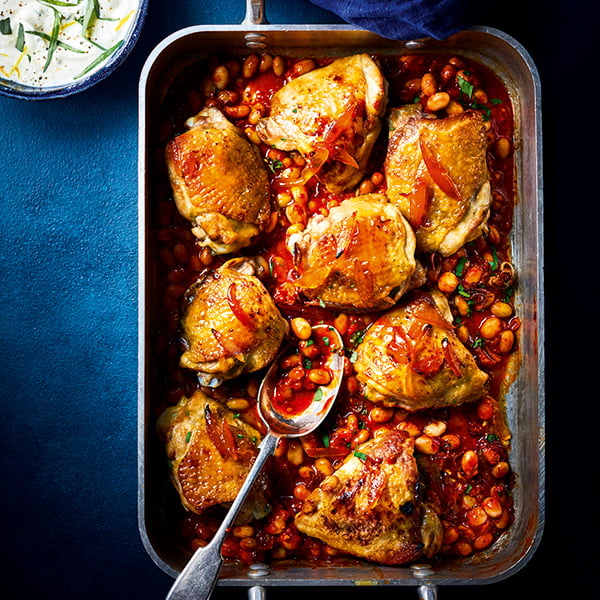Why eating more pulses is a sustainably savvy move
Here’s a New Year’s Resolution we can get behind: eat more pulses. Working more pulses into your diet is great for both your health and the planet. Pulses are good for us, good for the soil, and are a source of protein with a much lower carbon footprint than meat and dairy, explains Clare Finney. Read on for our expert guide to pulses and discover why British-grown pulses are due a comeback…

Why should we eat pulses?
Put it this way: there is no reason not to eat pulses, and a whole host of reasons to eat more of them. “Most foods have contradictions and tensions around aspects of the biosphere, or human health or trade and the economy,” says Tim Lang, professor of food policy at City, University of London and author of Feeding Britain: Our Food Problems and How to Fix Them. “Pulses are a rarity, in that they tick every box. They are nutritious, store and travel well, are able to grow well in different geographical zones, and they are good for the environment.”
Because they are a high yield crop that require little or no fertiliser, they are famously cheap; even the trendy jarred varieties offer excellent value in terms of taste and nutritional content. They are filling and readily take on flavours, so will make any meal go further for less – be it a stew, soup, fillet of fish or joint of meat. “Make something that is good as it is, like a bean taco – then maybe have a bit of meat or fish on the side, if you want to,” says Joe Woodhouse, food writer, photographer and author of Your Daily Veg. Pulses promise protein, fibre and complex carbohydrates, so they release energy slowly.
Indeed, up until 200-odd years ago, pulses would have formed a central part of our diets. “Meat and dairy would have been luxury foods,” says Nick Saltmarsh, who co-founded the company Hodmedod back in 2012 to source and support pulses grown on British farms. “Beans and peas would have been harvested in the late summer, dried and stored and eaten throughout the year. They would have provided most of the protein we required.”
"Good for us, good for the soil, easily stored: pulses are unequivocally good news for both us and the planet."
Why did we stop eating them in the first place?
Because meat and dairy became more affordable. “One of the things that prompted us to start Hodmedod was the realisation that farmers were growing fava beans in the UK – but for livestock, not humans,” Saltmarsh explains. “We learned that fava beans and common peas have been grown in Britain for thousands of years. They were amongst the first crops to be introduced to Britain by farmers who spread north and west across Europe from the fertile crescent.”
As agricultural technology advanced and the industrial revolution created a new, wealthier middle class within the working classes, meat and dairy gradually replaced pulses as the regular source of protein. “Once you start getting your nutritional requirements from meat and dairy, there is no pressing need to eat pulses unless you’re poor. Then that food becomes stigmatised as ‘poor’ food’.” Arable and livestock farmers kept growing them because they are “fantastic crops, well suited to the British climate,” Saltmarsh continues. They restore fertility to the soil between crops, break up the cycle of pests and diseases, and they are nutritious feed for animals, which we were eating instead of the pulses.

“Only in the 20th century did pulses come back into our diets. With the wartime rationing we took to baked beans; then more recently, as we’ve discovered other cuisines, we’ve incorporated dishes like hummus and dal. Yet these are all made with imported pulses, like navy beans, chickpeas and lentils.” This brings us up to the present where British familiarity with and demand for pulses is full swing, but where “there is little understanding of those grown in Britain. We set up Hodmedod to establish that connection between British crops, farmers and the consumer, and encourage people to think about the provenance of their pulses.”
So why are pulses so good for the environment?
Pulses – or rather, legumes, because pulse refers to the seed rather than the plant – self-fertilise the soil through root nodules containing ‘nitrogen fixing’ bacteria which convert atmospheric nitrogen into ammonia. This means even when they’re grown in non-organic systems, they don’t need artificial fertilisers which pollute our waterways and degrade the soil. The nodules also feed microbial life, boosting both the soil’s biodiversity and its organic matter; when those microbes die, carbon is locked in. All this make legumes a perfect cover crop for crop rotation systems, says Saltmarsh. “When they are harvested, some of this nitrogen is left behind, so can benefit crops planted afterwards.” The harvested pulses store well and are a dense source of protein that can either replace or supplement meat, to which there is a limit to how much we should be producing. “They actually have a meatiness to them, especially if you cook them in chicken or beef stock,” says Chantelle Nicholson, chef and owner of sustainable restaurant Apricity.
"Pulses reduce both our dependence on artificial fertiliser and our dependence on dairy and meat"
Are British-grown pulses better for the environment?
The above benefits are all true of all pulses everywhere, but what Hodmedod are doing in the UK is particularly significant from a sustainability perspective, says Lang. “They are championing a new generation of farmers to show food we are used to importing can grow easily and well here.” They work directly with a network of British farmers to incorporate pulses which are well suited to Britain – carlin peas, fava beans, even chickpeas and lentils specifically bred to thrive in these climes – into their crop rotation systems, thus reducing their dependence on bought-in fertiliser and supplementing their income.

Sustainability isn’t just about our environment; it’s about our economy and society too, and at present there is a huge gap between what we import, and what we export, putting us in a precarious position both financially and from a food security perspective, he continues. “British pulses are good news agro economically and good news for food security as well as being good for the soil and soul.” What’s more, pulses’ already low carbon footprint is reduced even further by growing them here, rather than trucking and shipping them from abroad.
"All pulses are good for the environment to some degree; buying British supports the rural economy, reduces the financial and carbon cost of transporation."
What should I look for if I want to buy pulses which benefit the environment?
Broadly speaking you want pulses which have been grown in crop rotation systems rather than intensive monocultures, from brands which can trace their produce back to the growers. One option is to choose organic. “With organic farming, legumes are used very often in crop rotation which is one of the oldest and most natural methods of ecosystem management,” says Valerio Simonetti, founder of Mr Organic – a brand of bean (and other tinned things) you’ll find in most supermarkets. That said, many producers – including some Hodemedod source from – follow organic practices, but are not yet certified.
Another sign that your pulses have probably been grown with respect to the environment is if they are in jars: “quality beans don’t go in all jarred bean brands, and poor quality beans don’t go in all tins, but you’re more likely to find quality beans in the former than the latter [because] tinned beans are one of the most commoditised products in the market” says Amelia Christie-Miller, founder of Bold Bean Co who source specific varieties of heirloom beans from Europe for their jarred products. The process of canning in glass entails cooking slowly at a lower temperature to preserve flavour and texture, which means pulses are chosen for quality rather than price, as they often are for tins. It’s less likely to mean monocultures and the high inputs they entail, and more likely to mean heritage varieties which thrive in their environment they are grown in. “We need to diversify the varieties that we use across the whole food system as if a monocrop becomes resistant to a pesticide or faces a diseases – there will be a worldwide crisis.”
"Treat your beans as you would your beef, milk or eggs: look for the original source."
Which has the lowest carbon footprint: jarred, tinned or dried pulses?
Each have their merits. Glass jars can be re-used as well as recycled (they make great storage containers and cocktail glasses) but tins are more recyclable still, lighter and less fragile. “Their transport and production is therefore easier and less consuming in terms of both resources and emitted CO2,” says Simonetti. Moreover, Britain doesn’t have the facilties for canning in glass, so any jarred pulses you see will most likely have been processed in Spain. Whether in glass or tin, canning means processing in bulk, rather than in small quantities. “A factory will use less energy per jar than you will if you cook from dried on a stove,” says Lang. That said, dried are easier and more carbon efficient to transport, because there’s no added water. “As soon as pulses are cooked you are moving a product that weighs two or even three times as much,” says Saltmarsh.
So how should I choose?
According to your time, budget, recipe and ability. To get the very best for yourself and the planet, look for British-grown, organic or heirloom/heritage varieties. If you’ve time to soak and cook your pulses carefully then dried are best, from a cost and carbon footprint perspective. For efficiency, Woodhouse batch cooks 500g at a time, refrigerates them and uses them throughout the week. Investing in a pressure cooker will make the cooking process faster, and less costly. That said, it can be hard to achieve the same consistency of texture as a processed product if you’re cooking yourself, and canned offer consistency and ease for the time poor at a price that won’t break the bank.
Jarred are easily the most the most delicious, on account of their low, slow cooking. If you’re looking to convert bean-haters, these are your answer. Yet they are by far the most expensive. Save these for salads and other situations where the beans aren’t braised for hours or overwhelmed by flavours, and are allowed to shine.
Even if you’re buying the cheapest can you can find, only good things can from eating more pulses. “There’s no such thing as bad in the bean world,” says Christie-Miller. Whether British, Spanish, Canadian or anything else, beans are still good for you and the soil. If in doubt, buy whatever will make you eat them as much as possible.
Excited to cook more pulses? Here’s some delicious recipe ideas to get you started…
Creamy white beans with savoy wedges and ‘nduja
Subscribe to our magazine
Food stories, skills and tested recipes, straight to your door... Enjoy 5 issues for just £5 with our special introductory offer.
Subscribe
Unleash your inner chef
Looking for inspiration? Receive the latest recipes with our newsletter